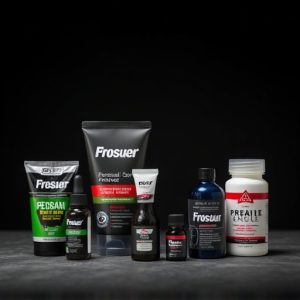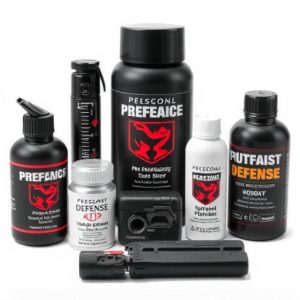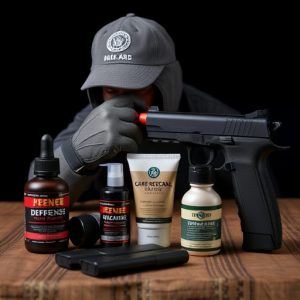Personal Defense Products: Less Lethal Weapons, Tech & Legal Insights
Less lethal weapons, including stun guns, pepper spray, tasers, and ballistite bullets, offer effect…….
Less lethal weapons, including stun guns, pepper spray, tasers, and ballistite bullets, offer effective personal defense options without causing permanent harm or death. These tools have gained prominence in both law enforcement and civilian self-defense due to their balance between conventional firearms and non-violent de-escalation techniques. Recent technological advancements have made modern personal defense products more sophisticated, compact, and user-friendly, with features like GPS tracking and adjustable sting levels. However, the legalization and commercialization of these products spark debates around legal and ethical considerations, requiring stringent regulations, responsible marketing strategies, and comprehensive training programs to ensure safe use and minimize risks.
“As violence continues to pose significant challenges worldwide, there’s a growing need to explore alternative solutions. Less lethal weapons, also known as non-lethal force tools, offer a promising approach to public safety and personal defense. This comprehensive article delves into the various aspects of less lethal weaponry, from understanding their mechanisms to evaluating the latest trends in personal defense products. We examine how technology is revolutionizing safety measures while exploring critical legal and ethical considerations surrounding their commercialization and use.”
Understanding Less Lethal Weapons: A Comprehensive Overview
Less lethal weapons, also known as non-lethal or alternative force options, are designed to incapacitate or control individuals without causing permanent harm or death. These tools have gained significant attention in recent years, particularly within law enforcement and personal defense industries. The concept behind less lethal weaponry is to offer a middle ground between conventional firearms and non-violent de-escalation techniques, providing officers and citizens with effective options for self-defense while minimizing the risk of fatal consequences.
Personal defense products categorized as less lethal include various tools such as stun guns, pepper spray, tasers, and ballistite bullets. Stun devices deliver a powerful electric shock, temporarily paralyzing the target’s muscles and rendering them defenseless. Pepper spray irritates the eyes and respiratory system, causing the person to cough and temporarily blur their vision. Tasers, or conducted electrical weapons (CEWs), use two thin probes connected to the device to deliver a high-voltage pulse, disrupting muscle control in a targeted area. Ballistite ammunition is designed to cause minimal permanent damage while still providing a powerful deterrent against aggressive threats.
Personal Defense Products: Evolving Trends and Innovations
Personal defense products have seen a significant evolution in recent years, driven by advancements in technology and a growing demand for effective yet less lethal options. From pepper spray to stun guns, these tools are now more sophisticated, compact, and user-friendly than ever before. Manufacturers are incorporating innovative features such as GPS tracking, automatic activation mechanisms, and adjustable sting levels to enhance safety and ensure users have the upper hand in potentially dangerous situations.
Trends indicate a shift towards personal defense devices that offer a balance between deterrence and minimal harm. This includes non-lethal firearms designed with safer mechanics and reduced recoil, as well as electronic control devices like Tasers that temporarily incapacitate targets without causing permanent injury. With the rise of remote learning and awareness about self-defense, there’s also a notable interest in digital training platforms that teach individuals how to use these products effectively while promoting responsible ownership.
The Role of Technology in Enhancing Safety with Non-Lethal Force
Technology plays a pivotal role in enhancing safety and promoting non-lethal force as an effective method for law enforcement and personal defense products. Advanced innovations have enabled the development of less lethal weapons, offering a safer alternative to conventional firearms or physical combat. These technologies aim to incapacitate or deter individuals without causing permanent harm, which is crucial in high-stress, volatile situations.
From stun guns and Tasers to non-lethal projectile weapons, modern tools leverage electrical currents, chemical compounds, and precision mechanics. They provide officers and civilians with options to respond to threats while minimizing the risk of fatal injuries. The integration of smart sensors, advanced targeting systems, and data analytics further improves accuracy and safety, ensuring that force is used proportionately and only as a last resort.
Legal and Ethical Considerations for Commercialization and Use
The legalization and commercialization of less lethal weapons, such as stun guns and pepper spray, have sparked intense debates regarding legal and ethical considerations, especially when it comes to personal defense products. Many advocate for their availability, arguing that they provide individuals with a safer alternative for self-defense compared to traditional firearms. However, critics raise concerns about potential misuse, unintended injuries, and the escalation of violence. Balancing the right to self-defense with public safety is a delicate task, requiring stringent regulations and responsible marketing strategies.
When considering the ethical implications, it’s crucial to examine who can access these products and for what purpose. Strict age restrictions and comprehensive training programs can ensure that only capable individuals use less lethal weapons responsibly. Moreover, clear guidelines on their use in various scenarios, including law enforcement and civilian applications, must be established to prevent abuse and protect vulnerable populations. The responsible commercialization of personal defense products should prioritize consumer education, transparent marketing, and ongoing research into their effectiveness and potential risks.


